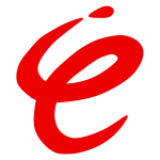
Personal interviews demand confidence and clarity. This blog outlines five simple steps to help you stand out. Master your responses, build rapport, and handle questions like a pro. Be ready to shine in any personal interview!
Cracking a personal interview can feel like an intimidating challenge, but with the right preparation and mindset, you can transform your anxiety into confidence. Personal interviews provide a platform to showcase your potential, skills, and enthusiasm for the role. By following these five essential steps, you’ll be able to make a lasting impression on any interviewer and significantly boost your chances of landing your dream job.

1. Research the Company
Before stepping into the interview room, invest time in learning about the company. Understanding its values, culture, and recent developments demonstrates your genuine interest in the organization. Here’s how you can conduct effective research:
Visit the company’s website: Review their mission statement, core values, and leadership team.
Follow their social media accounts: Stay updated on recent events, campaigns, or announcements.
Read news articles or press releases: Gain insights into the company’s industry standing and recent achievements.
Check employee reviews: Platforms like Glassdoor can provide a glimpse into the company’s work environment and culture.
This research not only allows you to tailor your responses but also equips you with thoughtful questions to ask the interviewer, showcasing your initiative and engagement.
2. Practice Common Questions
Familiarity with frequently asked interview questions is key to reducing nervousness and improving your response delivery. Here are some commonly asked questions to prepare for:
“Tell me about yourself.”
“What are your strengths and weaknesses?”
“Why do you want to work here?”
“Describe a challenge you’ve faced and how you overcame it.”
“Where do you see yourself in five years?”
For each question, craft thoughtful and concise responses that highlight your skills and experiences. Use these tips to enhance your practice sessions:
Rehearse out loud: Speaking your answers helps refine your tone and clarity.
Conduct mock interviews: Partner with a friend, family member, or career coach to simulate real interview scenarios.
Record yourself: Playback can help you identify areas for improvement in your delivery and body language.
The more you practice, the more comfortable and confident you’ll feel during the actual interview.
3. Dress Appropriately
First impressions are critical, and your attire plays a significant role in shaping the interviewer’s perception of you. Choose professional attire that aligns with the company’s dress code. Here are some tips for dressing appropriately:
Formal settings: Wear a tailored suit, polished shoes, and minimal accessories.
Business casual environments: Opt for a collared shirt or blouse with dress pants or a skirt.
Creative industries: Incorporate subtle personal style while maintaining professionalism.
Additionally, ensure your clothing is clean, well-fitted, and free of wrinkles. A polished appearance reflects your seriousness about the opportunity and conveys respect for the interviewer and their time.
4. Showcase Your Skills
During the interview, be ready to discuss specific examples from your past experiences that highlight your skills and achievements. Use the STAR method to structure your responses:
Situation: Describe the context or challenge you faced.
Task: Explain the task or goal you were working towards.
Action: Detail the actions you took to address the task.
Result: Share the outcome, emphasizing your contributions and the positive impact.
For example, if asked about problem-solving skills, you could say:
“In my previous role, we faced a sudden drop in customer satisfaction scores (Situation). My task was to identify the root cause and implement solutions (Task). I conducted surveys to gather feedback and collaborated with the customer support team to redesign our response process (Action). As a result, our satisfaction scores improved by 20% within three months (Result).”
This approach helps you present your accomplishments in a clear and compelling way, leaving a strong impression on the interviewer.
5. Follow Up
Your efforts shouldn’t end when the interview does. Sending a thank-you email afterward is a simple yet effective way to stand out. Here’s what to include in your follow-up message:
Express gratitude: Thank the interviewer for their time and the opportunity to interview.
Reiterate your interest: Reaffirm your enthusiasm for the role and the company.
Highlight a key point: Reference a specific topic discussed during the interview to leave a lasting impression.
Keep it concise: A brief, well-written email shows professionalism and respect for the recipient’s time.
For example:
"Dear [Interviewer’s Name],
Thank you for taking the time to meet with me today. I thoroughly enjoyed learning more about [Company Name] and the [Position Title] role. Our discussion about [specific topic] further reinforced my excitement about the opportunity to contribute to your team. Please don’t hesitate to reach out if you need any additional information from my side.
Thank you once again for this opportunity. I look forward to the possibility of working with your team.
Best regards,
[Your Name]"
Conclusion
Personal interviews are pivotal moments in your career journey. With diligent preparation and a positive attitude, you can turn them into opportunities for success. By researching the company, practicing common questions, dressing appropriately, showcasing your skills, and following up, you’ll be well-equipped to navigate any interview with confidence and poise. Remember, preparation and professionalism are your best tools for leaving a lasting impression and securing your desired role. Approach each interview as a learning experience, and with time, you’ll master the art of personal interviews.



![How to Crack an Interview [20 Scientifically Proven Tips]](https://emploice.com/storage/1-4-150x150.png)





